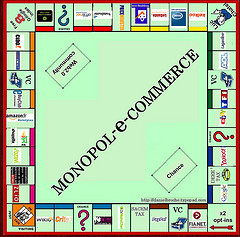Financial Forecasting
Good Dilution or Bad Dilution. Know When Greed is Good
In the 1987 film “Wall Street”, Michael Douglas in playing the lead role of Gordon Gekko proclaimed “Greed, for lack of a better word, is good. Greed is right. Greed works. Greed clarifies, cuts through, and captures, the essence of the evolutionary spirit….”
Well what does greed have to do with share dilution and the entrepreneur?
Simply, in order to get capital an entrepreneur has to give up a portion of his or her company. Many entrepreneurs do not have deep pockets to delve into to feed their cash starved ventures – so they must ask investors for cash. For some entrepreneurs this becomes a tremendously agonizing and emotional decision since the thought of giving up a percentage of the company and thus potentially control of the company is untenable. The problem – the entrepreneur’s unbridled ego and an unabated view of fear and, yes, greed of giving up something of higher value than the utility that cash can bring. This can blur vision of getting the capital needed to get a company to the next stage of important development.
However, let’s take a step back. In the beginning a start-up company entrepreneur owns a 100% of the company. Sounds impressive, but a 100% of a high risk venture, with no revenues just expenses and a great deal of hope is really 100% of nothing. When cash is needed an entrepreneur has to raise money and it’s the issuance of shares that triggers ownership dilution. This is good dilution because when investors see value they expect a favorable return which means the company must have some accretive promised value. So all things being equal, if an investor acquires 40% of the company for $500,000 and this $500,000 can create even more enterprise value, then the entrepreneurs 60% is worth more than the 100% initial ownership. Good dilution means a share unit has increased in price and when multiplied by the number of shares held by the entrepreneur it means an overall appreciated value of his holdings. (more…)
eCommerce for Business Hits Stride
The e-commerce based revenue model helped businesses score record profits over the holiday season. Clearly, this is one revenue stream that entrepreneurs can’t afford to ignore. That said, startup executives need to think clearly about how this revenue model will work in conjunction with the rest of their business plan in order to entice investors.
- (Download our E-Commerce Based Revenue Financial Model. Automatically generate balance sheets and cash flow statements.)
The e-Commerce Revenue Model Opportunity
The numbers for eCommerce shopping over the holidays were staggering even before Boxing Day, according to Network World:
During the one-week period ended Dec. 18, online retail shoppers spent a record $6.3 billion. On four days of that week, the single-day e-commerce tally surpassed $1 billion dollars, according to web watcher comScore.
So far this season, consumers have spent nearly $32 billion online, which is a 15 percent increase compared to the corresponding days of last year’s November-December holiday season. The volume of sales is expected to slow as the holidays draw near and shoppers head for the malls.
For established brick-and-mortar companies, the e-Store has become an essential revenue source; for companies like Amazon and Apple (iTunes store), the online shopping cart is the most important way they make money. And during the holidays, there is an added benefit; since most entrepreneurs actually enjoy taking time off to spend with their families, letting e-Stores handle customers has obvious advantages. The revenue keeps rolling in even as you’re unwrapping gifts in your living room. (more…)
The Arithmetic of Deal Structuring Using a Capitalization Table
 The first step in structuring a deal is to determine how much capital your company needs to raise using a capitalization table. This calculation should be determined by your milestone plan translated into numbers within the financial model. You will be able to see how much is needed to get you through the next critical stages of your company’s growth and the cash flow needed to do so. Be realistic about two things. First what you plan for will likely take twice as long and will cost twice as much than you expected.
The first step in structuring a deal is to determine how much capital your company needs to raise using a capitalization table. This calculation should be determined by your milestone plan translated into numbers within the financial model. You will be able to see how much is needed to get you through the next critical stages of your company’s growth and the cash flow needed to do so. Be realistic about two things. First what you plan for will likely take twice as long and will cost twice as much than you expected.
The second step is to determine the pre-money valuation. This is the tricky part because it’s a pricing decision that affects the share price you will be setting for the next round of financing.
As you determined in the prior round the milestones to get your company to the next level of development and you succeeded in accomplishing them then you have built enterprise value or the worth of your company. This means the value or price of shares in your company would have increased and from your perspective you can give investor a good argument why an increase in share price is warranted.
The other part of the equation is that the investor will have a say as well as to what they see as the pre-money valuation. The preceding is part of the negotiating process around valuation.
But keep in mind these principles when filling out your capitalization table: (more…)
Netflix and the Success of the Subscription-Based Revenue
 What do software, magazines, certain types of television shows, phone service and fitness centers all have in common? All of these businesses operate according to a subscription-based revenue financial model.
What do software, magazines, certain types of television shows, phone service and fitness centers all have in common? All of these businesses operate according to a subscription-based revenue financial model.
As Netflix has demonstrated, this model that has been around for ages, when coupled with technological innovation, can provide an edge to knock established industry giants off their feet.
The story of Netflix vs. Blockbuster is already being used in business schools as a case study in competitive business models. Blockbuster, as we know, has already filed for bankruptcy. Netflix, despite some serious and well-publicized setbacks in 2011 due to conflict with content providers, is still very much alive and kicking (and ultimately, those content providers will likely have to come around).
The Gourmet Retailer provides a synopsis of the trend in Has Business Really Changed?:
The neighborhood video rental store is on its last legs because guess what, streaming video from Netflix and others is rampaging into America’s living room. Netflix vs. Blockbuster was no contest. Blockbuster opened 4,000 stores in two decades. Netflix sales were up 43,101 percent from 1999. That’s not a mistake, sales were up 43,101 percent and Blockbuster filed for bankruptcy in 2010. And music stores keep closing. iTunes made its debut in 2003 with devastating effects on music retailers. Tower Records went out of business in 2004, and Musicland folded in 2006. Songs sold on iTunes: up 1,169,900 percent from 2003. The trend is clear.
It’s not that brick-and-mortar stores are on the way out. Clearly, some types of retailers are here to stay for the foreseeable future. People still like to shop for their own groceries in supermarkets. Plenty of customers still like to try on clothes at the Gap. Electronics retailers like Best Buy often have sophisticated e-shopping websites with discounts on their in-store products, but they still have enough walk-in traffic to justify giant big-box stores.
That said, a subscription model can offer competitive advantage in a number of ways. Importantly, revenue is more consistent. Yes, people do change or cancel their subscriptions, but those decisions are not made as often as purchasing decisions. Companies can continue to earn revenue for months or even years before a customer finally gets around to canceling. Most of us who got fitness club memberships and stopped showing at the gym can relate to this situation from the other side of the ledger.
Financial Models with Sensitivity Analysis: Subscription Revenue
Perhaps you’re already considering developing a subscription revenue model business. Success for these types of companies in particular depends on accurate financial projections. Our downloadable templates include revenue forecasting sheets, cost assumption sheets that then automatically generate financial statements such as Income, Balance Sheets and Cash Flow statements. These will help you understand how your business “pencils out”..
DOWNLOAD Financial Models with Sensitivity Analysis: Subscription Revenue
Your Capital Edge Resource Bundle. A Sound 100 Dollar Investment
 Your Capital Edge is the successful entrepreneur’s secret toolkit that helps you raise capital, create investor presentations, formulate an HR plan, secure financing, locate Angel Investors, make accurate cash-flow projections and more.
Your Capital Edge is the successful entrepreneur’s secret toolkit that helps you raise capital, create investor presentations, formulate an HR plan, secure financing, locate Angel Investors, make accurate cash-flow projections and more.
- Purchase the YCE Resource Bundle today for just $50 (saving $50 off the regular price)
We’ve had a great response from colleagues and clients who understand the value of our tools and templates that help you save time and money. And now we’re offering an even better deal for those who want a lot of tools all at once – and for a low price.
Tools for Startup Entrepreneurs and Leaders of Established Companies
With the YCE Resource Bundle you can download a complimentary suite of tools at a 50 percent discount (or a savings of $100). The bundle includes the following downloads:
- How to Create a Business Plan
- Investor Presentations Templates and Overview on Preparation
- Legal Disclosure Templates
- Lexicon
- Investment Summary Templates
- Investor Communication Checklist
- SWOT Analysis
- Capitalization Table
- Human Resource Model
- Due Diligence Checklist
- Industry and Competitor Research
- NDA Samples
- Valuation Model
- Market Research Tool Box
For those entrepreneurs and managers who want a comprehensive toolbox, this is a great value. For $100, you get a bundle of resources that can help you on your way to developing your own successful venture. This could just be the best investment you make all year.
Demographics and Market Research
Investors and entrepreneurs ignore demographics at their peril. Studying demographics is a key part of market research. If you don’t understand who your target customers are, you have no customers (Cue the flailing entrepreneur who shouts “But my product is aimed at everyone!”). You need to look at key markers like age, sex, ethnicity and more when examining buying behavior. If your customers are businesses you need to look at where they are in the value chain, how much of the product do they buy and when and who makes the decision within the company to buy these products.
Using Demographic Data Strategically to Capitalize on Buying Behavior
- (Check out our Industry and Competitive Market Research eBook. Download for just $19.95)
For instance, development companies for the mobile app industry would be very interested in a new Pew Internet survey that shows 50 percent of all US adults have apps on their cellphones. When you break it down further, you see that 62 percent of adults aged 25-44 have smartphones. As Dan Rowinsky notes on ReadWriteMobile, if you were thinking of aiming a new app at teens on the go, you might want to adapt your product knowing that only 38 percent of teens have smartphones – and their parents aged 45-54 only have a marginally higher adoption rate.
The restaurant industry pays very close attention to demographic data – at least, the restaurants that stay in business do. Take for example, the case detailed in Inc. magazine of an Italian Lebanese pizzeria owner named Antonio Swad.
In 1986, he moved from Ohio to Dallas to open a traditional pizzeria. Realizing that he was located in an area with a large concentration of Hispanic consumers, he changed his eatery’s name to Pizza Patrón and focused his marketing efforts on the Latino community.
It wasn’t an easy decision to make. Swad–who is of Italian and Lebanese descent–says he was completely unversed in Latino culture when he made the strategic decision to pursue that market. To attract Latino customers to his stores, he hired bilingual employees for customer interaction positions, dedicated time and money to developing a large community service presence and, most controversially, allowed customers to pay in pesos. The shift in focus paid off. Today, Pizza Patrón operates 95 stores in six states, with 13 more in the works.
When collecting data, it is perfectly reasonable to take into account the demographics and buying behavior of past customers. However, past behavior is no guarantor of future results. A careful study of the demographics of your target market will not only help you develop products and sales processes to cater to your current customers, but also help you adapt to the marketplace of tomorrow.
Want to learn more about market research? Register for my workshop happening at SFU Harbour Centre on December 7, Accelerating Business Value with Market Research
Capital Edge Roundup. Forecasting, Financial Modeling, Investment Value Propositions and more
When I developed Your Capital Edge’s modules teaching the Strategy, Structure, Substance, and Sizzle of investing, my aim was to educate entrepreneurs in how to raise equity capital.
Helping entrepreneurs better understand how these enterprise value enhancing principles work is an ongoing process. Here is a roundup of some of my recent and most popular companion articles about entrepreneurship and investing.
- Forecasting and Financial Modeling. Financial models help us understand what could be in store for the company and assist in decision-making.
- An Investment Value Proposition. What investors want to hear (and what they don’t want to hear).
- Columbus and Today’s Entrepreneur— A Common Bond? Was the discovery of the New World an incredibly successful partnership between an entrepreneur and a venture capitalist?
- Bricks and Mortar – Moving from the Garage to Real Office Space. what can an entrepreneur do to ease the burden of these essential tasks and move on with the larger goal of building an entrepreneurial enterprise?
Naturally, I’m an avid reader of the most interesting investment blogs and business news articles that tie into the work I do. Here is a roundup of what I’ve been reading.
- Should Startups Move To Be Close To Venture Capital? Probably not, it turns out.
- Raising Venture Capital – Horror Stories and Other Bad Behavior. Not for the faint-hearted.
- This 7-Year-Old Entrepreneur Wants To Be The World’s Youngest Investor. Apparently, you’re never too young to start.
Market Sizing From The Bottom Up
 “It’s a $100 billion market! All we have to do is capture one percent of the market and we’ll be making money hand over fist. You can’t lose by investing in our company.”
“It’s a $100 billion market! All we have to do is capture one percent of the market and we’ll be making money hand over fist. You can’t lose by investing in our company.”
This “top-down” model is a common – yet extremely dangerous – way of sizing a potential customer market for a new company or product. It provides little data useful for strategic financial forecasting and can give entrepreneurs an over-inflated perception of their company’s business potential.
How does top-down market sizing work? The entrepreneur looks at a given area – say, the population of China, or the total sales figures for all software sold anywhere on the planet, or the purchasing power of every household in America. “If we only sell to (some tiny, insignificant percentage), we’ll make a killing… but since our product is so incredible, we’re bound to sell more.”
It’s unrealistic and doesn’t’ actually provide much useful data. It will make investors run for the hills.
Forecasting the Market from the Bottom Up To Get Better Data
Investors listening to a company’s pitch want to hear a “bottom-up” forecast of your sales market. Instead of relying on someone else’s market numbers and extrapolating a small percentage from that, you need to generate your own information to have better accuracy. (more…)

Browse Our Blog
- Angel Investors
- Articles
- Business Strategy Tips
- Company Valuation
- Crowdfunding
- Due Diligence
- Entrepreneur tips
- Financial Forecasting
- Financial Modeling Tips
- Going Public IPO
- Government grant business
- High Tech Startup News
- Invest in a business
- Market Research Tips
- Raising Investment Capital
- Raising Venture Capital
- Startup entrepreneur tips
- Vancouver business news
- Video

News & Links









